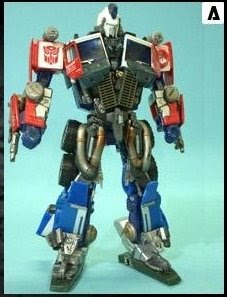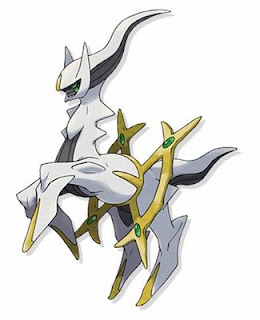Once you get the job, make sure you continue to grow and stay indispensable. As you show that you can perform duties that no one else can and have carved out a unique niche for yourself, your "indispensability factor" will grow, leading to more authority and responsibility inside of the team. "
"Be Flexible
I've been fortunate enough to play key roles in over ten AAA titles, but I've also been on projects that were stalled, rejected, or canceled. Go into it with your eyes open, and know that, no matter how skilled you are, you won't be lead designer or producer on a multi-million dollar project your first time out.
Maybe your first job will be second- or third-string designer on a DS title, or artist on an XBLA or PSN game. Embrace these duties. Working on a smaller team can be incredibly rewarding, and you'll find more satisfaction in saying "I designed this entire game mechanic" or "I modeled this entire level background" than you will in saying "I came up with hit point values for the enemies" or "I modeled the trees in this level," which is what may happen when first working on a huge team.
Many people in the industry here never work on a "true" AAA title, but that doesn't mean that they don't create great games and have a blast doing it.
Even if you do reach the plateau where team sizes are in excess of 100 people, you still have to be flexible.
I've had countless ideas shot down, entire game concepts denied, and months of work put into design documents vanish at the blink of an eye because of changes in a title's focus. Remember, games are a business, and you might have the best idea or greatest character design in the world but if the market doesn't like it, it's not going in.
It's not always about creating what you think is the "best" game (or even what you would necessarily choose to play). It's about making something that will sell, and sell well. I can't count the times that a junior team member has complained that management "doesn't get it" and swears that the game would be 100 times better if only their idea had made it in. It is the creative director's job (or producer's, in some teams here) to establish a clear direction for the title with management and make sure that all game content meshes with that direction.
The larger the team, the more individual compromises will need to be made. Learn to take it in stride and you'll begin to see the big picture.
Be Tough
This one is deceptively simple but harder in practice. You've got to strengthen yourself both physically and mentally to endure the rigors of a career in game development here in Japan, where the language contains a word meaning "to die from overwork" and many normal salarymen don't even get home until close to midnight.
All development teams around the world experience what is known as "crunch time:" the period right before a title is released to certification where everybody on the team is in a mad scramble to finalize all of the content and iron out the last few pesky bugs.
Some Japanese developers, however, seem to have made it a goal to elevate the ridiculousness of crunch into an art form. Obviously it varies from team to team and title to title, but I've had crunches on two-year titles that have lasted six months. That's six months of having no social life and no free time, limited time with loved ones, and long periods in which you forget what the inside of your apartment looks like because you've slept at the office for five nights in a row.
While I certainly don't condone this practice — in fact I've made it a goal to alleviate it as much as possible — there is just no way around it on Japanese teams and you'll have to accept it as a fact of life. Learn to adapt: make your colleagues your best friends (they should be anyway), because they'll be the only company you have on many a long night spent testing or debugging. Practice living your entire life (food, work, and sleep) at your desk for a month and you'll be on your way.
Learn to be thick-skinned mentally as well. At first you will be demoralized because of perceived failures and because your ideas or designs were rejected.
Know that this happens to everybody, and don't take it personally. Japanese developers, for the most part, take a very strict and regimented approach to dealing with other team members. It's not because they are not kind (you will grow to learn that they are) or are out to get you, rather it is part of a long-standing tradition in production industries to codify relationships in a master-apprentice context.
So when the lead designer takes the paper containing what you believe is your best game mechanic ever and throws it into the trash (yes, I am speaking from personal experience here) or the art director has you redo a render for the 100th time because the sheen on the shoelace holes of a character's sneaker are not perfect, know that they do these things because they truly believe that you will learn and become better as a result. Hang in there and you may gain a wonderful mentor with whom the bond of friendship and camaraderie is not easily broken.
Be Patient
Last, but certainly not least, is patience. You must realize that things won't always move as quickly as you'd like them to. This advice works on both a micro and a macro level.
On a smaller scale, you will no doubt wonder why your feedback is not carrying as much impact as you would like it to, particularly when you are new to a team or the project is in its infancy. You may feel (with good reason) that you have great ideas and designs and they are being brushed aside with nary a second glance.
I've talked already about becoming indispensable to a team, carving out a niche for yourself, and earning the trust and respect of team members. All of these things take time. To quote a Japanese figure of speech, most developers here prefer relationships that are "narrow and deep" rather those that are "wide and shallow." In other words, they intend to connect with fewer individuals on average, but when they do, those connections are profoundly strong.
If you persevere in your duties, remain dedicated, take criticism whether you feel it's deserved or not, and show everyone that you are a harmonious member of the team, you should find that your feedback and ideas will gradually carry more weight with those around you.
On a larger scale, realize that you may not initially advance in your career as much as you might hope from project to project. Japanese companies are notoriously difficult to move up in, and it will take a mountain of hard work and a great track record to convince team leaders that you are ready for an official promotion.
You will, of course, be asked to take on more and more responsibility without an change in title or increase in salary, and you must learn to work through these hurdles, just as you must overcome the "glass ceiling" that still hampers foreign developers at some companies.
You may feel that your contribution to a title was astronomical and that you fully deserve more say in the creative process, but don't be surprised if you find yourself in a similar position when the next project rolls around.
Just know this: if you have chosen the right team to work for, I will guarantee that someone is silently watching and observing your endeavors. You may not get much feedback or indication of an impending expansion to your role in the team, but it will come in due time and it will feel great because you will know you have truly earned it."




















































